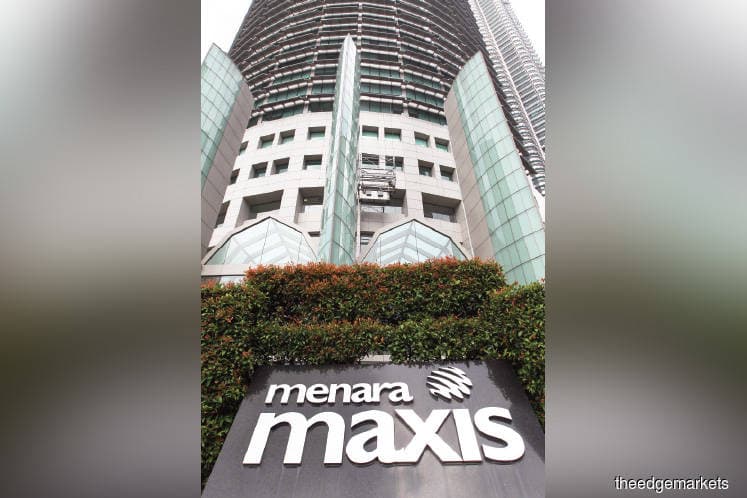
This article first appeared in The Edge Financial Daily on April 23, 2018
Maxis Bhd
(April 20, RM5.87)
Maintain sell with a lower target price (TP) of RM5.95: Maxis reported first-quarter of financial year 2018 (1QFY18) core net profit of RM510 million (-1.9% quarter-on-quarter [q-o-q]; unchanged year-on-year [y-o-y]). This was within our and consensus estimates at 25.9% and 25.7% respectively. An unchanged first interim dividend of five sen per share was declared, representing a payout ratio of 74.6%.
1QFY18’s service revenue declined by 2.8% q-o-q and 4.6% y-o-y — in line with guidance — mainly on the prepaid segment’s weakness. Recording its 11th consecutive quarter of net churns (-278,000 q-o-q), the segment continued to struggle with price-focused competition, SIM consolidation and prepaid-to-postpaid migration. Management highlighted that arresting the segment’s sustained service revenue decline (-6% q-o-q; -15.6% y-o-y) has been one of its priorities. Positively, reception to Hotlink RED, the segment’s new flagship product launched during the quarter, has been encouraging thus far.
Meanwhile, the postpaid segment’s performance remained uninspiring. Its service revenue declined marginally by 0.9% q-o-q (+5.2% y-o-y) due to seasonality. Also, despite recording its seventh consecutive quarter of net adds (+64,000 q-o-q), driven by MaxisONE Plan subscribers, average revenue per user (Arpu) declined by 4.2% q-o-q and 4.2% y-o-y to RM92 per month. This was due to the increase in shared line acquisitions and entry-level postpaid subscribers (that is via Hotlink Postpaid FLEX). Management affirmed that with sustained traction from these areas, there is further downside to Arpu.
To draw comparison, DiGi exhibited similar subscriber trends during the quarter with net churns in the prepaid segment (-80,000 q-o-q) and net adds in the postpaid segment (+91,000 q-o-q). However, its postpaid segment fared better with six consecutive quarters of consistent net adds and stable Arpu (-1.3% q-o-q; -2.5% y-o-y).
At the bottom line, core net profit was flattish (-1.9% q-o-q; unchanged y-o-y) as stronger margins from continued cost-optimisation initiatives cushioned the decline in service revenue. Led by lower direct costs and operation and maintenance costs, earnings before interest, taxes, depreciation and amortisation (Ebitda) margins expanded 1.1 percentage points (ppts) q-o-q and 3.1ppts y-o-y to 45.7%.
Upon performing housekeeping to our model, FY18, FY19 and FY20 earnings estimates are adjusted marginally by -1.2%, -1.1% and -0.8% to RM1,944 million, RM1,934 million and RM2,001 million.
The underlying basis for management’s previous guidance was maintained. However, if based on Malaysian Financial Reporting Standard 15, expectations are for FY18’s service revenue to decline by mid-single digit (previously low-single digit) and Ebitda to decline by high-single digit (previously mid-single digit). Expectations for base capital expenditure (around RM1 billion) and free cash flow (close to FY17’s level) to be close to FY17’s levels were maintained. Meanwhile, efforts are being undertaken to grow enterprise and broadband contributions but management alluded that it would be more visible in the medium term.
To date, the group possesses a leading network. It has the largest 4G LTE population coverage at 92% and according to OpenSignal’s recent findings, Maxis takes the lead against its peers in the space of 4G and overall download speeds. That said, our concerns surround challenges to defend its position as risks prevail from the narrowing of network quality gaps. Recall that reallocation of the lower band 900MHz spectrum with DiGi and U Mobile gaining increased access has resulted in a more equitable spectrum footprint. And in the meantime, Celcom has targets to be on par with peers in terms of 4G population coverage.
We value Maxis at a lower TP of RM5.95 per share — based on a discounted cash flow-valuation with weighted average cost of capital of 7% and long-term growth rate of 1%. Premised on the group’s flattish outlook and average dividend yields of 3.3%, we reiterate our “sell” recommendation on the stock. The ability to maintain its premium pricing remains a key risk. — TA Securities Research, April 20